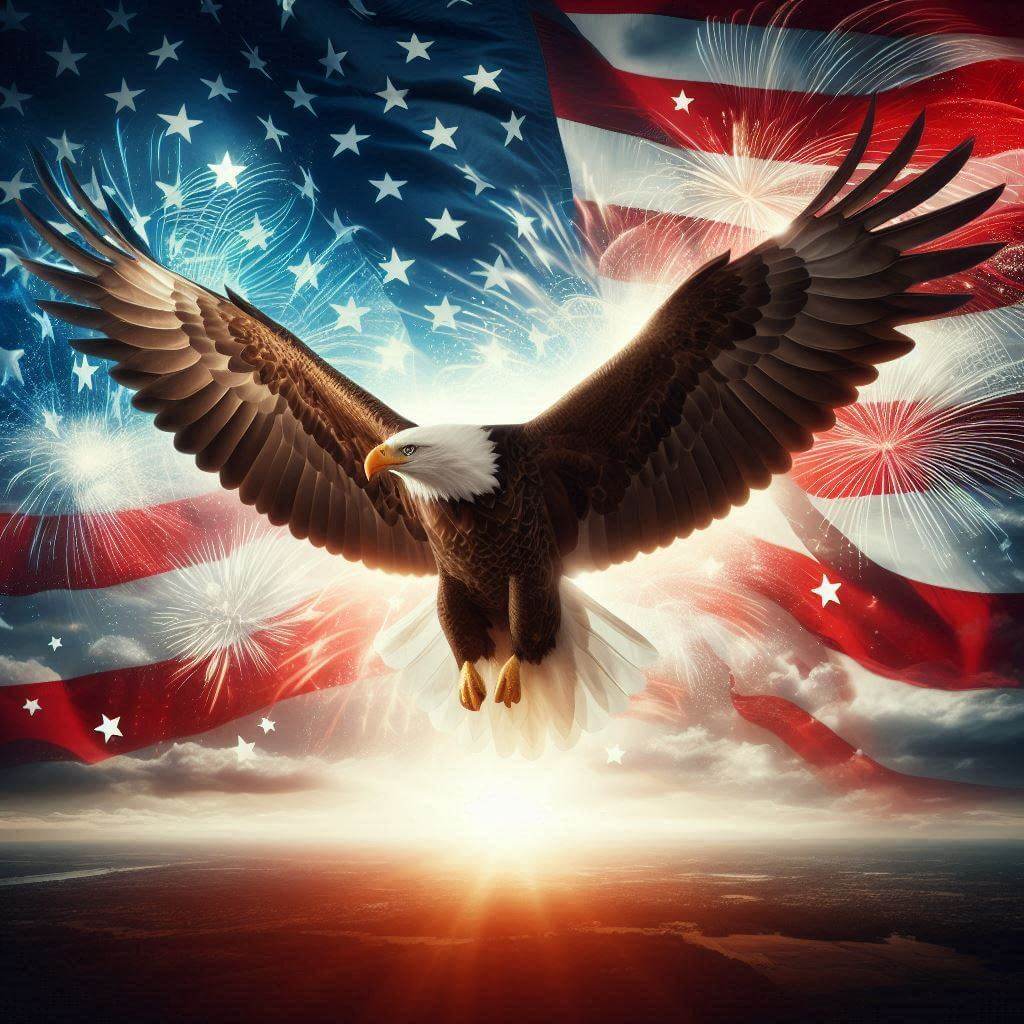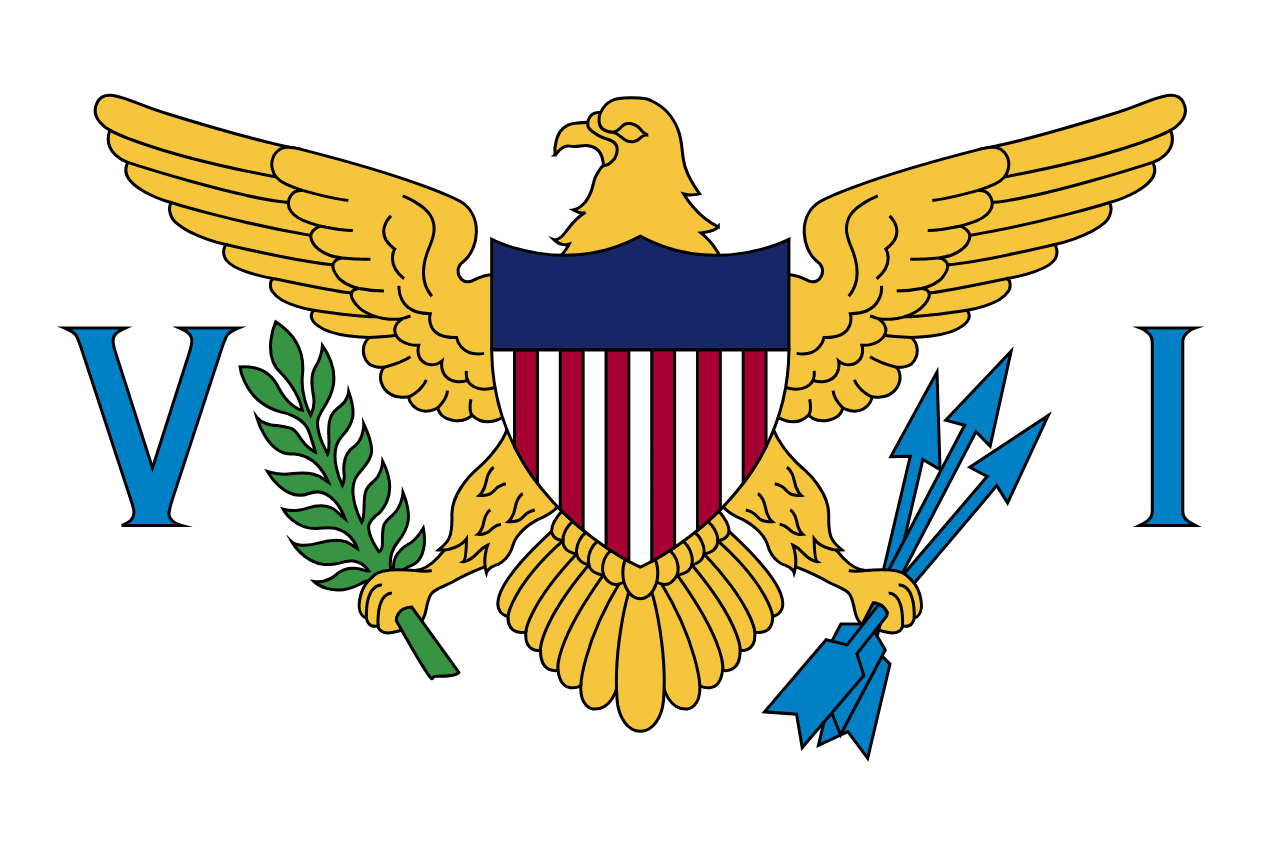La bandera de los Estados Unidos, cariñosamente conocida como las Estrellas y Franjas o la Vieja Gloria, es uno de los símbolos nacionales más reconocibles del mundo. Su diseño, que consiste en trece franjas horizontales alternando rojo y blanco, con un rectángulo azul en el cantón que contiene cincuenta estrellas blancas, está lleno de simbolismo y significado histórico.
Información sobre los Estados Unidos
| Día de la Bandera Nacional | 14 de junio |
| Estado soberano | Sí |
| Nombre oficial | Estados Unidos de América |
| Capital | Washington D. C. |
| Población | 331,449,281 |
| Área | 9,833,520 km² |
| Moneda | Dólar estadounidense (USD) |
| Idioma | Inglés |
| Continente | América del Norte |
| Región | América del Norte |
| Subregión | América del Norte |
| Fronteras | Canadá, México |
| Zona horaria | UTC-5 a UTC-10 |
| Código de llamada | +1 |
| Dominio de nivel superior | .us |
Historia de la bandera de los Estados Unidos
 La bandera de los Estados Unidos fue adoptada oficialmente el 14 de junio de 1777, por resolución del Segundo Congreso Continental. Esta fecha se celebra anualmente como el Día de la Bandera en los EE.UU. El diseño original presentaba trece estrellas y trece franjas, representando las trece colonias originales que declararon su independencia de Gran Bretaña.
La bandera de los Estados Unidos fue adoptada oficialmente el 14 de junio de 1777, por resolución del Segundo Congreso Continental. Esta fecha se celebra anualmente como el Día de la Bandera en los EE.UU. El diseño original presentaba trece estrellas y trece franjas, representando las trece colonias originales que declararon su independencia de Gran Bretaña.
A medida que la nación creció, también lo hizo la bandera. Se añadió una nueva estrella por cada nuevo estado, mientras que el número de franjas se fijó en trece para honrar a las colonias originales. El diseño actual de 50 estrellas fue adoptado el 4 de julio de 1960, después de que Hawái se convirtiera en el 50º estado en 1959.
El diseño de la bandera se atribuye a varias figuras históricas, incluido Francis Hopkinson, un firmante de la Declaración de Independencia. Sin embargo, la popular historia de Betsy Ross cosiendo la primera bandera estadounidense, aunque querida, no está respaldada por pruebas históricas sólidas.
Simbolismo y diseño de la bandera de EE.UU.
Las Estrellas y Franjas encarnan los principios y valores fundamentales sobre los que se fundaron los Estados Unidos. Cada elemento de la bandera tiene un simbolismo específico:
- Las trece franjas representan las trece colonias originales, simbolizando las raíces de la nación.
- Las cincuenta estrellas representan los cincuenta estados de la Unión, simbolizando el crecimiento y la unidad del país.
- Los colores también tienen significado: el rojo simboliza la fortaleza y el valor, el blanco representa la pureza y la inocencia, y el azul representa la vigilancia, la perseverancia y la justicia.
La disposición de las estrellas en filas y columnas crea un diseño visualmente equilibrado que se ha vuelto instantáneamente reconocible en todo el mundo.
Uso y significado de la bandera de EE.UU.
 La bandera estadounidense es un símbolo ubicuo de identidad y orgullo nacional. Se exhibe prominentemente en edificios gubernamentales, escuelas y hogares privados en todo el país. La bandera juega un papel central en los días festivos nacionales, particularmente el Día de la Independencia (4 de julio) y el Día de los Caídos, donde sirve como punto focal para las celebraciones y conmemoraciones.
La bandera estadounidense es un símbolo ubicuo de identidad y orgullo nacional. Se exhibe prominentemente en edificios gubernamentales, escuelas y hogares privados en todo el país. La bandera juega un papel central en los días festivos nacionales, particularmente el Día de la Independencia (4 de julio) y el Día de los Caídos, donde sirve como punto focal para las celebraciones y conmemoraciones.
En tiempos de crisis o triunfo nacional, la bandera a menudo se convierte en un símbolo de unión. Imágenes icónicas como el izamiento de la bandera en Iwo Jima durante la Segunda Guerra Mundial o la colocación de la bandera en los escombros del World Trade Center después del 11 de septiembre se han convertido en poderosas representaciones de la resiliencia y la unidad estadounidenses.
La bandera también es un elemento importante en ceremonias oficiales, incluida la inauguración de presidentes y el homenaje a los veteranos militares. El manejo y la disposición adecuados de la bandera están regidos por el Código de la Bandera de los EE.UU., reflejando el profundo respeto otorgado a este símbolo nacional.
Datos interesantes sobre la bandera de EE.UU.
- El diseño actual de la bandera de EE.UU. ha sido modificado veintisiete veces desde su adopción en 1777, reflejando los cambios en el número de estados admitidos en la Unión.
- El apodo "Vieja Gloria" fue acuñado por el Capitán William Driver, un capitán de barco estadounidense del siglo XIX, para su bandera personal. El término luego se utilizó ampliamente para la bandera nacional.
- Seis banderas estadounidenses han sido plantadas en la luna por misiones Apolo entre 1969 y 1972.
- El diseño de la bandera de 50 estrellas fue creado por Robert G. Heft como un proyecto de secundaria. Inicialmente recibió una B- por el proyecto, pero luego se cambió a una A después de que su diseño fuera seleccionado por el presidente Eisenhower.
- La bandera que inspiró a Francis Scott Key a escribir "The Star-Spangled Banner" en 1814 se conserva en el Museo Nacional de Historia Americana del Instituto Smithsonian.





